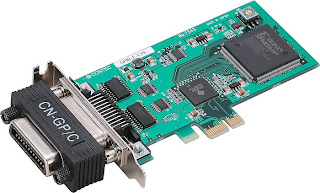- Flash Memory
Flash memory refers to electronically erasable programmable read only memory. It is a memory chip that maintains stored information without requiring a power source. It is often used in portable electronics, like MP3 players, and in removable storage devices.
- Graphic card
The graphics components control and enhance how graphics are displayed on your computer screen. The graphics components are on a separate card that plugs into a slot on the motherboard, which is the main part of the computer.
- Sound Card
A sound card processes audio files in order to provide high-quality playback through computer speakers. It plays voice as well as music files, and can handle various audio file formats including .wav, .mp3 and .cda to name but a few.
- Network interface card (NIC)
A network interface card referred to as a NIC, it is a device that allows computers to be joined together in a LAN, or local area network. The network interface card acts as the liaison for the machine to both send and receive data on the LAN.
- Plug & Play
Plug and Play (PnP) is a capability developed by Microsoft for its Windows 95 and later operating systems that gives users the ability to plug a device into a computer and have the computer recognize that the device is there. The user doesn't have to tell the computer.
- Bus line
The bus lines are the communicating electronic lines that connect different parts of the CPU to various other parts. In addition, the bus lines also link the CPU to different parts on the system board of your computer. The data flows in the form of bits along the bus lines.
- HDMI
HDMI supports both audio and video data components. It supports standard, enhanced, or high-definition video as well as multi-channel digital audio on a single industry standard cable. It is capable of carrying any type of compressed audio data. It can carry a bandwidth of 5 Gbps (gigabits per second) too.
- Cache memory
Cache memory is extremely fast memory that is built into a computer’s central processing unit (CPU). The CPU uses cache memory to store instructions that are repeatedly required to run programs, improving overall system speed.








No comments:
Post a Comment